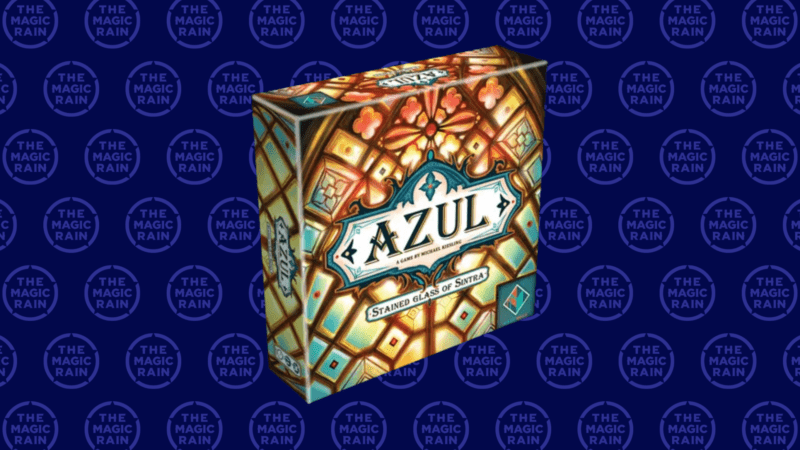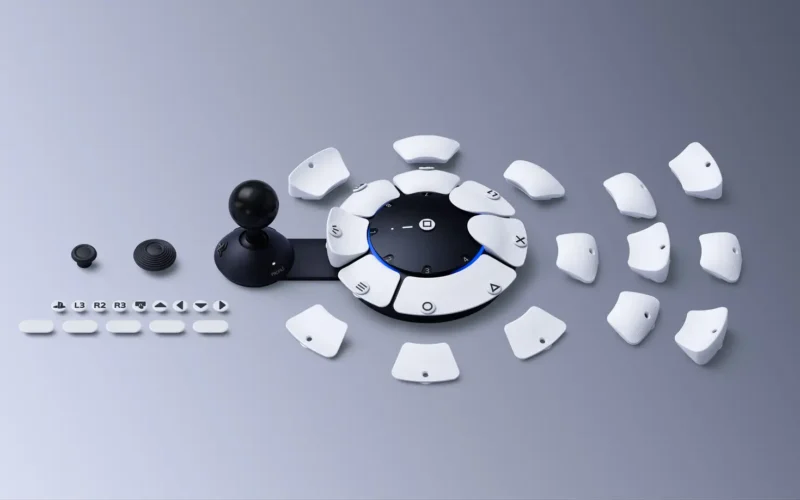Here I am with another board game review, and this time it is a game that is a “sister” to the well-known and award winning board game, Azul. That is, Azul: Stained Glass of Sintra. Like Azul, the board game is a competitive “chess-like” game that has you competing against up to 3 other players to build the board, hoard points, and win all the glory you can. Like any other player-versus-player board game, this game can also make enemies out of friends, but more out of competitiveness rather than pettiness.
I preface the review by saying that I did play with Azul extensively with friends but not competitively. Thus, I do know that this “sister” game does have some similarities in concept but have a different points system. Therefore, I am playing the game with full knowledge of the concept but I do not know everything about it.
The Game
The game, like Azul, has a very simple concept. Build stain glass on windows panes by matching their colours to the pieces you draft from the centre. For every completed window pane and for every colour that matches the round colour bonus, you get points that you move on the tracker board. Unlike Azul, there is no need to figure out which colour pieces to collect and place since in Azul: Stained Glass of Sintra, you place the pieces straight onto the window panes and any extra pieces fall to floor and shatters, thus netting you some negative points.
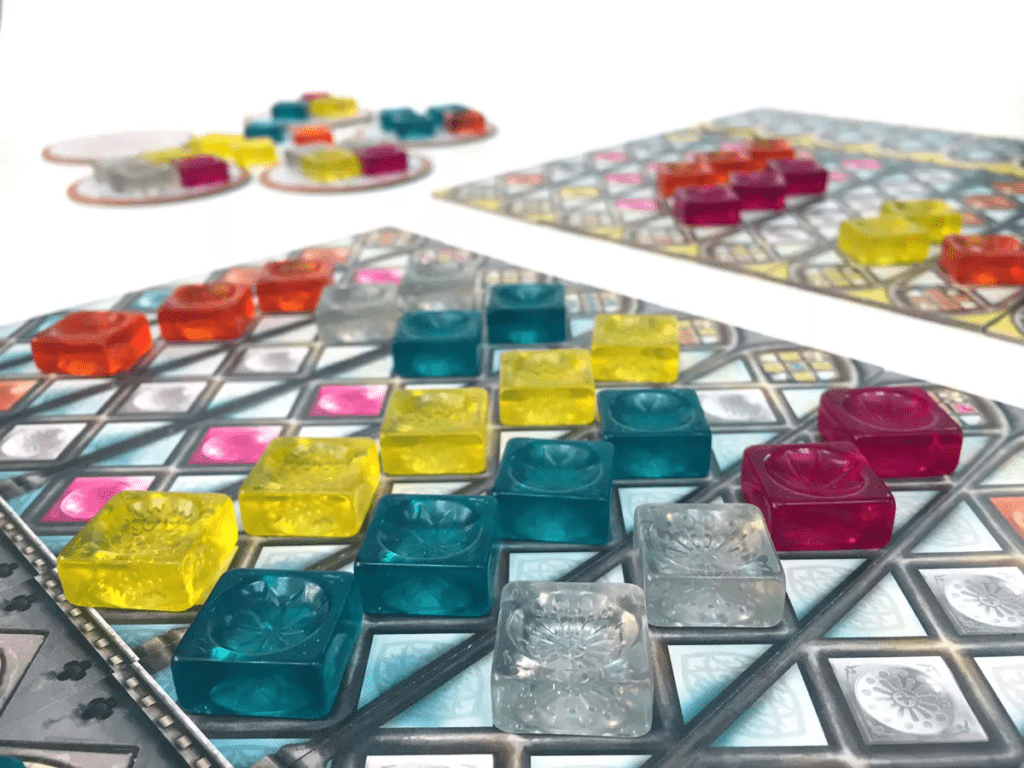
The game is for 2 to 4 players with each player receiving boards that will make up their scoring system, as well as the window panes to place the pieces they have drafted. A scoring board will be placed in the middle and one of the players will keep track of the points of each player and move their pieces on the scoring board to match their current score.
The coloured pieces will be pulled randomly from a bag in a group of four and placed on small circle boards called “factories”. The number of “factories” on the table corresponds to the number of players playing the game, with the minimum being 5 for 2 players and the maximum being 9 for 4 players. The circle board “factories” are then lined in a circle in the middle of the table within reach of all players, leaving the centre of the circle empty.
Starting the game, players can choose to either draft pieces or move their meeple from a window paned to the leftmost window pane on their board. The first player, bearing the “1st Player token” will then draft pieces from a single colour from a factory and place the other pieces together with the “1st player token” in the middle of the circle.
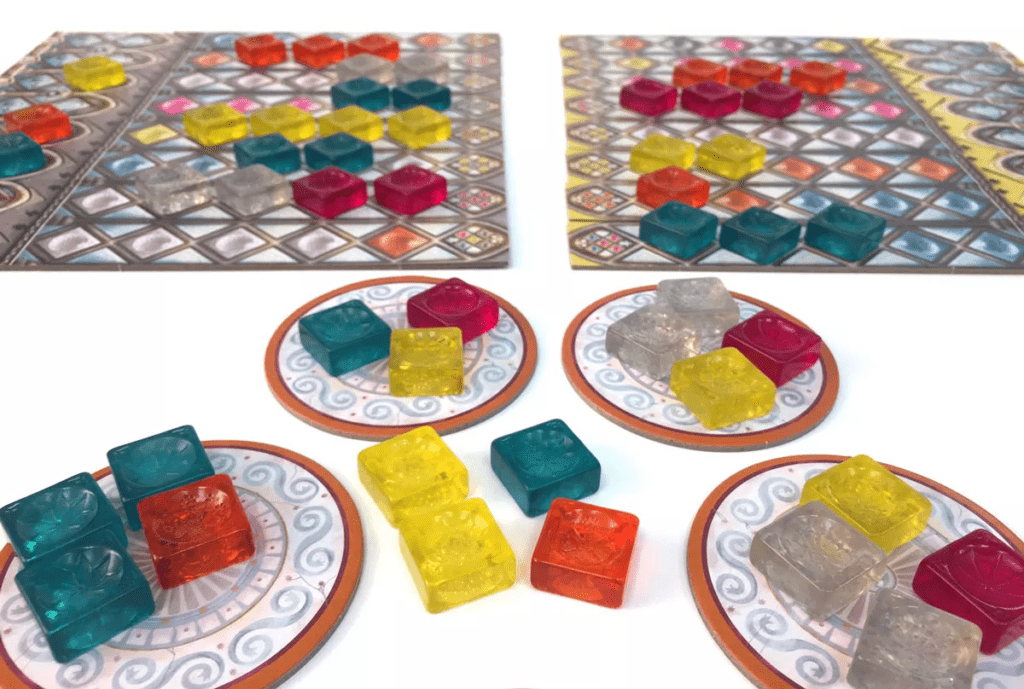
The second player onwards can then draft pieces either from the other factories or from the middle of the circle, taking the “1st Player token”. Bear in mind that if they take pieces from the middle of the circle, they have to take all of the pieces of that single colour. They then place the coloured pieces on the window pane that their little meeple is currently standing at, or the window pane right next to it (and never the left). If they choose to place even a single piece on the window pane next to the current one, they have to move their meeple to that window pane.
The difference between this game and the original Azul, as mentioned, is that the players do not need to place the pieces in a “Line” and wait for the round to end before placing the pieces on their colour board to score points. Furthermore, unlike Azul, where you score points for each placement of a piece, in this game players only score points when a window pane is completed.
There is also the further complexity of not only moving the meeples forward and backward on the window pane to place the pieces, but also in the points system where completing window panes on right will benefit more points when completing window panes on the left later.
What Did I Like?
It is a drafting game akin to the original Azul, Citadels, and 7 Wonders which I love to play since drafting has a low floor of understanding as a game concept, but a high ceiling of skill to achieve. Just like Azul, drafting each colour piece places a lot decision making and strategizing as you are trying to complete your window panes while stopping your opponents from completing theirs. Unlike Azul however, the colour and design of each window pane for each player are different thus creating another layer of complication and strategy to it.
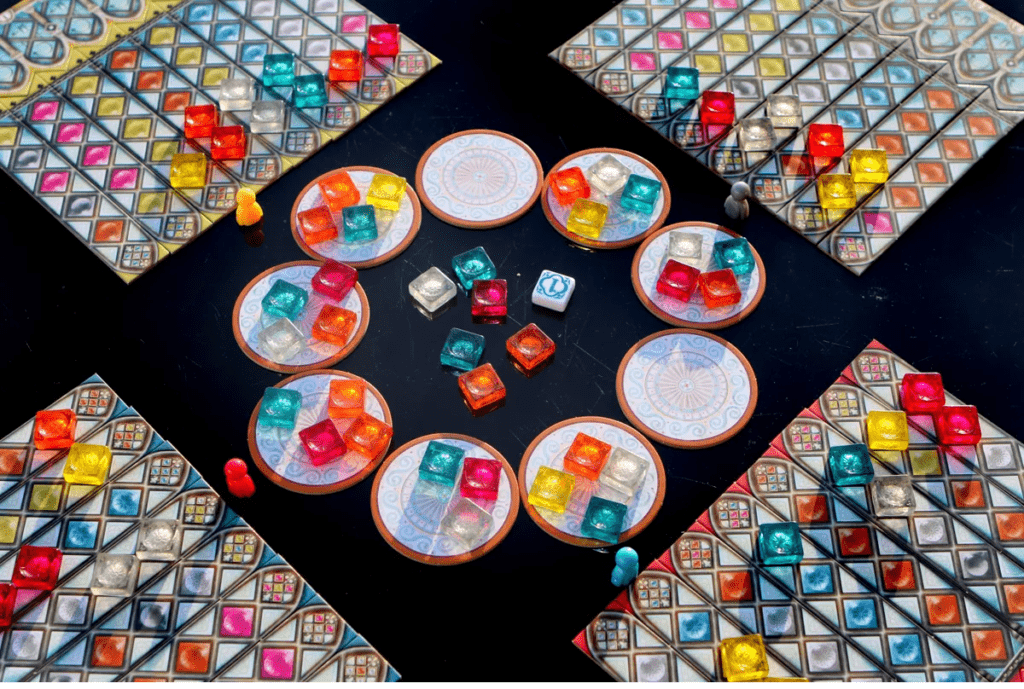
The design and colour of the board and pieces are vibrant and varied, immersing the player in building windows on a pane while moving their meeples from left to right. Just like Azul, the pieces and board are solid and heavy, thus placing them on the board will not have them flying around unless the table is flipped from an angry player. Each coloured piece is see-through with different sets of colours making them look closer to windows, thus increasing the immersion of the game.
Like Azul, this game has its strategic competitiveness which gives it an edge over other player-versus-player board games that are currently in the market. Each piece picked to be put on the window panes is a strategic step, not only to increase your chances of getting higher points but also to hinder your opponents’ plans.
Even deciding which window pane to work on first is strategic since, as mentioned, completing the rightmost window panes and later completing the left window panes gives a higher point boost. There is even the strategy of choosing which colour to complete first since each round gives bonus points for different colours. Furthermore, overreaching in choosing a colour may end with a few pieces on the ground shattered, resulting in negative points on the score board.
What Did I Not Like?
It is Azul, but at the same time, not Azul. That is my first negative remark on the game. It tries to capture the same concept and gameplay of the original Azul, but adds layers of complication and points to the game that wasn’t necessary. Azul in itself is a very simple drafting game that uses very simple methods to achieve points. There are various ways to achieve points in the original Azul, with a concept and gameplay that’s easy to grasp but hard to master. While in this game, there are a few more layers to the gameplay itself which is already complicating a simple game, and there are more layers to the points system that bloats itself when it does not have to.

The second thing that I have to compare to the original Azul is the amount of components the game has, which is also bloated when compared to the original Azul. The window panes work both front and back with a total of 8 single window panes brought together on a player board with a meeple on top. There is a fold-up cardboard that can be propped up where all the shattered pieces will go to, which later will be added back to the bag if there are not enough pieces in the bag to be put into the “factory”, which is a step that seems to be defeating itself. The space occupied by the game is slightly bigger than the original Azul but the number of components it takes to setup the game is far more.
Lastly, there is more luck involved in this game than the original Azul, where the placement of the window panes, front or back, left or right is randomised thus there is a little bit of luck involved when picking the few colour pieces needed. There are times when the coloured pieces were short due to being drafted by the other players and since the pieces do not match my window pane or the one next to it, I had to pick a piece just to shatter it, resulting in negative points. There is no way to move the meeple forward, only backwards, thus the luck in the placement of the window pane becomes a factor.
The Verdict
Overall, it is both an Azul game and not an Azul game, where it takes inspiration from the original but inflates it with more layers of complication and rules. From the review you have read, you can take it that I prefer the original Azul and that is because it is an award-winning game that is simple to play but hard to master. Azul: Stained Glass of Sintra, on the hand, is a little more complicated to play which requires some luck to master the game, which in my books would result in 5 out of 10 pies.
Image credit to Board Game Geek. The ‘Azul: Stained Glass of Sintra’ board game was provided by Anigames, and you can check out their upcoming event here.






